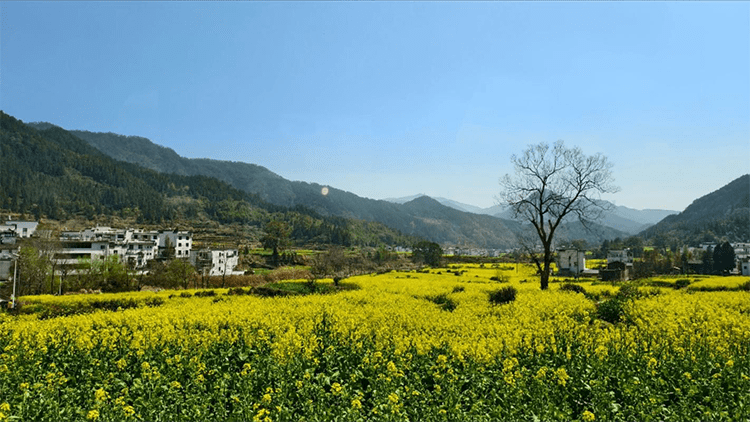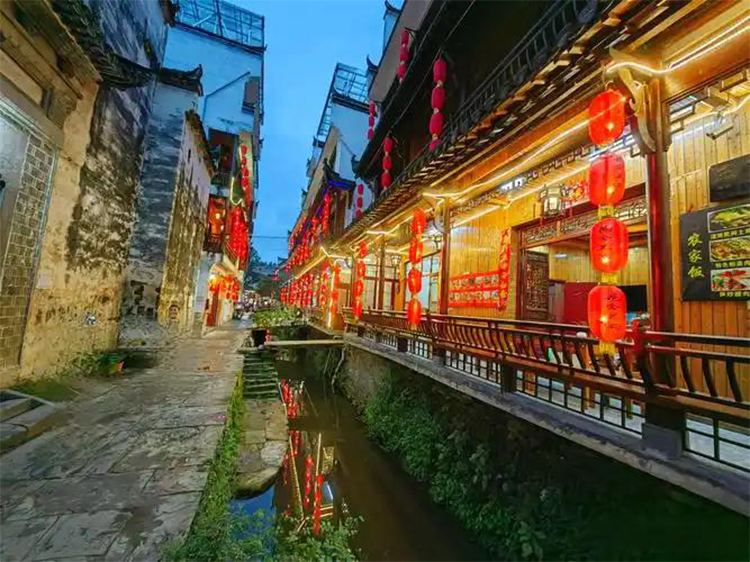Rural China Travel: Wuyuan Likeng — Huizhou’s Picturesque Water Village
Introduction
Early morning mist drapes white walls and black tiles like thin silk. A clear stream slips under weathered stone bridge piers, and a few white ducks glide across water that mirrors horse-head gables—this is Likeng, a Ming–Qing era village preserved in Wuyuan. Known across Jiangxi as a quintessential “small bridges, flowing water, village life” scene, more than 260 historic buildings line an S-shaped creek, creating a living, breathing version of a classical Chinese painting. Walk its lanes and you step on centuries of bluestone; glance at carved door lintels and you’ll meet exam-winning scholars and merchant guild stories. If you dream of finding an ink-and-wash village come to life, Likeng is that doorway.
1. Soul Imprint: A Living Fossil of Huizhou Merchant Culture
Likeng’s appeal is more than scenic—it’s a three-dimensional Huizhou epic. Founded in Northern Song Dynasty Daguan 3 (1109), the village grew into an important merchant post thanks to water transport and a local tradition of learning where “ten households never stop reading.” Historically 16 jinshi (imperial examination degree holders) emerged from Likeng; plaques naming “Dafu Residence” and “Zhuangyuan Jia” still hang proudly, and the copper-greened lacquer counters in Tonglu Pavilion hint at former commercial prosperity.
The core attractions cluster along the S-shaped creek in a pattern locals call “ten bridges, nine views.” Tongji Bridge arches like a rainbow, its Song-dynasty stonework marked by travelers’ stories. Shenming Pavilion once served as a folk arbitration hall—the mortise-and-tenon wooden joints speak to craftsmen’s intelligence. At dusk the double span of Likeng Twin Bridge mirrors itself in the water, as if folding time between past and present.
2. Four-Season Aesthetics: Rape Flowers and Autumn Sun-Drying
Likeng’s magic changes with the seasons:
– March–April: Rapeseed flowers ignite the valley in gold. Waves of yellow spill from terraced fields to creekside, striking against the restrained black-and-white of Huizhou buildings. Misty mornings between 7–9 a.m. are Monet-like and essential for photographers.
– October–November: Autumn sun bathes drying peppers, chrysanthemum petals, and persimmon cakes in amber. The local “sun-drying” (shai qiu) ritual—produce laid out on boards and terraces—creates warm, textured scenes akin to a Van Gogh palette.
– Rainy summers or snowy winters: sudden rains turn horse-head walls to ink-wash moods; bright days after snowfall freeze the creek’s surface into crisp silhouettes of flying eaves.

3. Deep Experiences: From Walking to Living the Village
Go beyond photo spots—live like a local:
– Dawn and dusk walks: Avoid tour-group peak hours (9:00–15:00). Stroll empty bluestone alleys in the soft sunrise or sit on Tongji Bridge at sunset to watch villagers draw water with bamboo baskets.
– Hands-on crafts: Try gold-accenting Huizhou ink or book a lesson making a She inkstone with an intangible-heritage craftsman (advance reservation required).
– Taste local flavors: Order Wuyuan green tea at a riverside stall with qingming cake (mugwort glutinous rice), and for lunch try “Likeng farmhouse”’s stuffed red carp—fresh, subtly sweet fish prepared in regional Huizhou style.
4. Practical Guide: Getting There and Off-Peak Tips
How to get there:
– From Wuyuan High-Speed Railway Station take a bus to Likeng Scenic Area (about 40 minutes; frequent departures), or hire a car to link nearby East Line sites like Huangling and Jiangwan (roughly ¥50 per person by shared car).
– By self-drive, navigate to “Likeng Scenic Area Parking”—the village is 12 km from the county town and roadside rapeseed fields invite photo stops.
Tickets and services:
– Admission: ¥60 per person (covers all historic buildings); students half price. There’s no extra general admission fee, though the scenic boat is worth trying (¥30 for 20 minutes).
– Signage and guides: Key spots have English signs. Electronic audio guides are rentable at the entrance (deposit ¥200), but hiring a local guide (about ¥80 for 2 hours) is recommended—them point out hidden carved “merchant motifs” on doorways and other small details.
Where to stay:
– For convenience choose Likeng Inn near the scenic exit—open your window to horse-head gables (around ¥200/night).
– For deeper immersion book Mingxun Courtyard by the stream—a Qing official’s residence turned guesthouse, where carved beds and modern comforts blend (reserve at least two weeks ahead).

5. Pitfalls and Hidden Gems
– Crowd alert: During rapeseed season weekend crowds can be five times the weekday level. Aim for entry before 7:00 a.m. or after 17:00 for quieter exploration and atmospheric evening-lit bridges.
– Hidden viewpoint: Instead of staying on the main creek path, walk 10 minutes uphill behind the village to the Observation Pavilion—there you’ll see the whole cluster of houses winding along the stream, a rare elevated composition.
– Cultural trivia: Notice the “商”-shaped window patterns on exterior walls—Huizhou merchants often placed windows above eye level for ventilation and privacy, symbolically signaling “wealth not openly displayed.”
Conclusion: Why Likeng Deserves a Special Trip
When many old towns turn into replica commercial streets, Likeng preserves the simple reality of riverside washing and hearth smoke. There are no cinematic spectacles here; instead, a cup of tea and an hour in a quiet lane teach what “poetic Chinese dwelling” really means. Take this guide, come in a spring or autumn season, and let Likeng become the cover image of your Chinese rural memories. Go meet clouds above horse-head walls and hear the rhythm of bluestone alleys—the most beautiful scenes often hide in the villagers’ smiling eyes.


